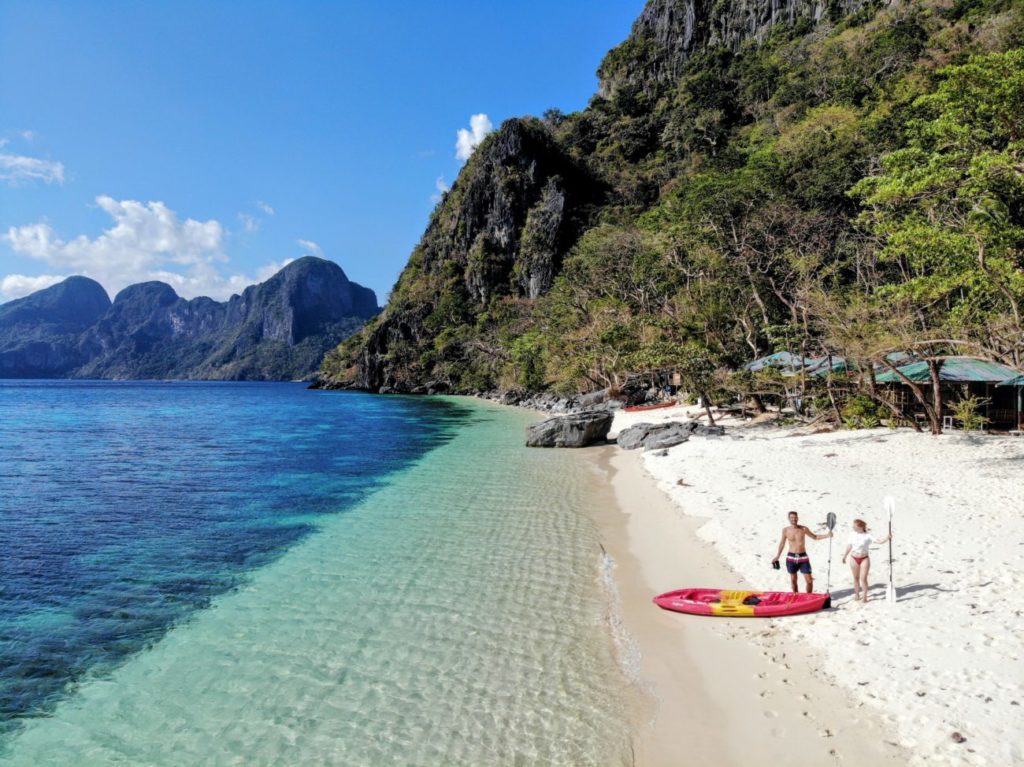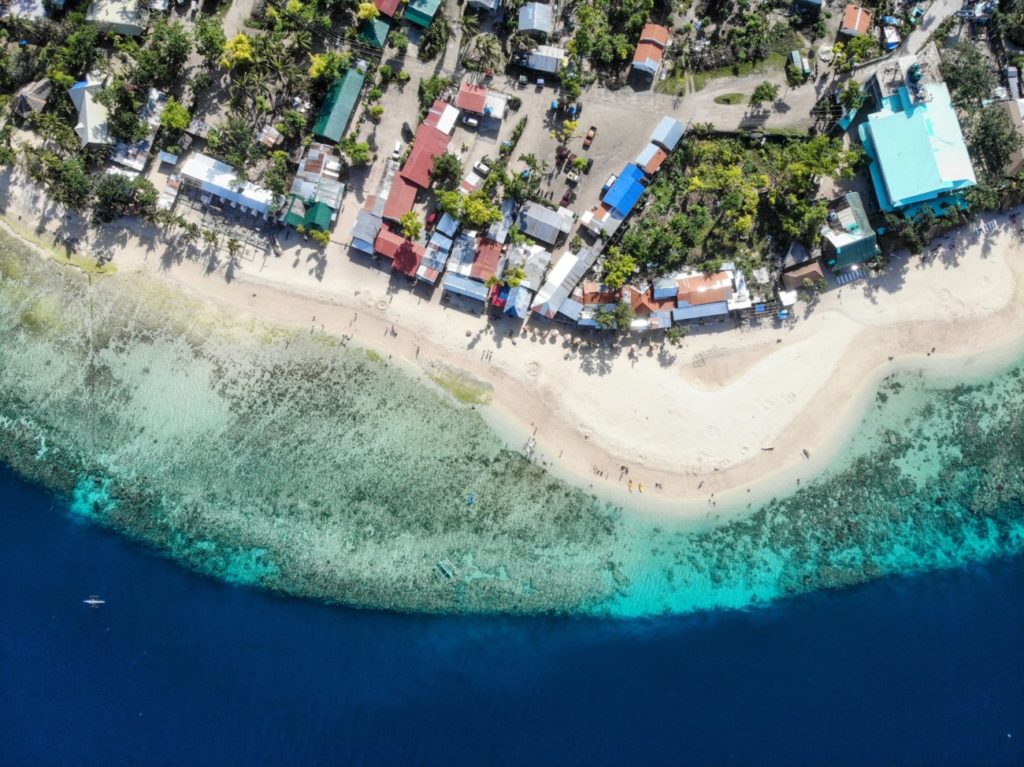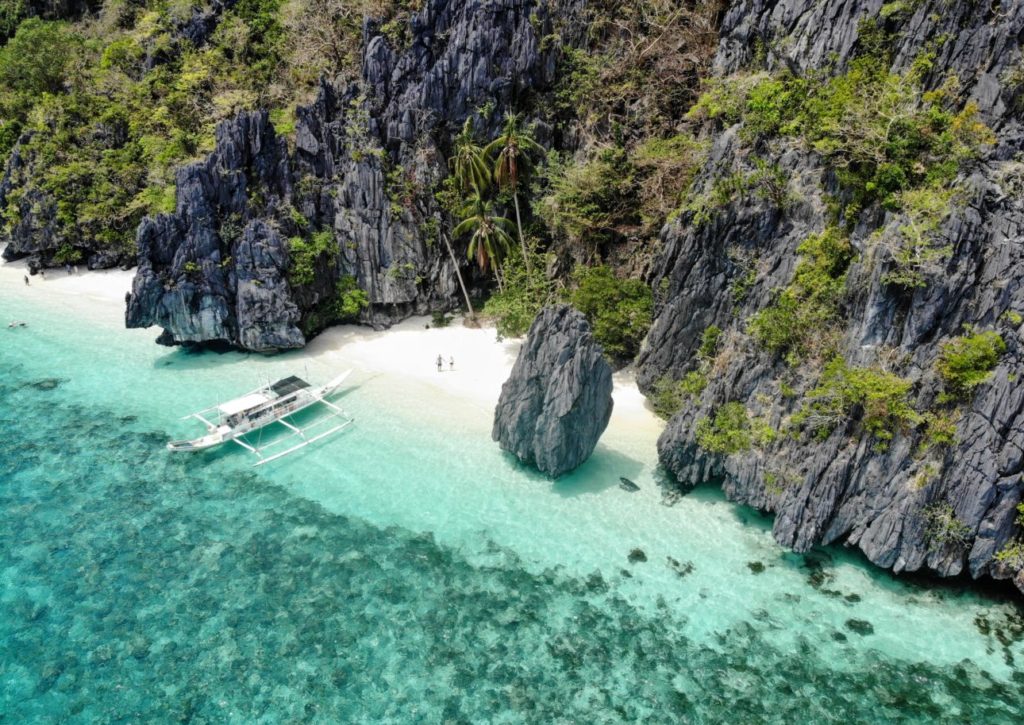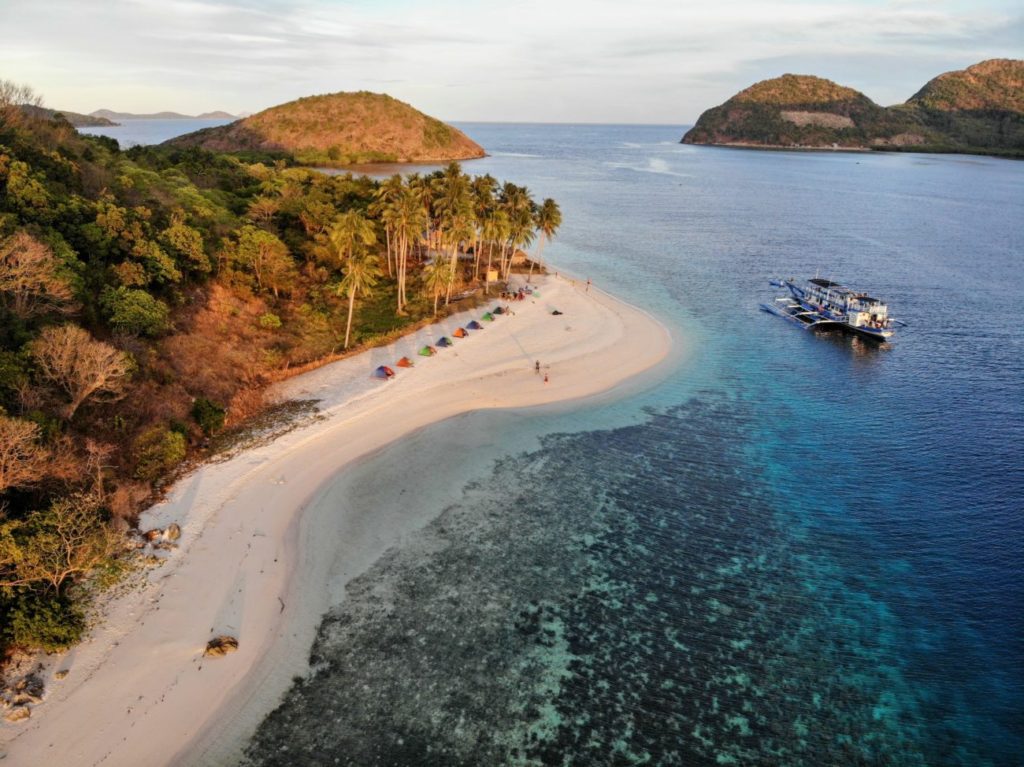After almost 2 years it is possible to travel to the Philippines again for international tourists since February 10, 2022. Without further ado, we decided to travel to the Philippines and researched how traveling to the Philippines in 2022 during COVID actually works, what pandemic restrictions there are and whether you can spend a relaxing vacation there.
Unfortunately, when researching, you don’t find many testimonials and are confronted with a variety of terms: One Health Pass, S-PaSS, Traze App and online comments that you even have to wear a mask on the beach. We spent 3 weeks in the Philippines in March 2022, making us one of the first international tourists in the country in almost 2 years. How complicated the organization of the trip is and how all the rules are actually implemented on the ground we will tell you now. So you will benefit from our experiences that we have collected during our trip.
Entry Philippines 2022
The rules for entry change very often. Therefore, before you enter the country, please check the current rules on the Department of Foreign Affairs site. In general we want to encourage you to travel to the Philippines. It is not as complicated as it sounds. We entered the Philippines in March 2022 and had to follow the following rules:
- Registration with One Health Pass
- negative PCR test
- International health insurance with COVID-19 coverage of at least $35,000

One Health Pass
The registration for the One Health Pass for the Philippines can be done only 3 days before arrival. During the registration you have to fill in some data. You have to enter information about when you will arrive, by which way, if you are vaccinated etc.. As soon as the information has been entered, you will receive a QR code that you must show upon entry. If you need to upload a test result, you can also do this afterwards.
Link to the official page of the One Health Passport (e-HDC) onehealthpass.com.com
Make sure you only apply for the One Health Pass on the official site. There are other websites that charge money for the application or are fake sites. However, registration is free and actually quite easy.
Where does the One Health Pass have to be shown?
We had to show the One Health Pass at check-in before departure. We flew with Singapore Airlines. After that we had to show the One Health Pass in Manila when entering the country, that’s it.
Tip: Take screenshots of all QR codes and documents and bring them with you as a printed copy. If the cell phone is gone, the battery is empty or there is no reception, the printout is extremely helpful.
When entering the Philippines you have to show your boarding pass, the One Health Pass, your vaccination certificate for the first and second vaccination and in our case a negative PCR test result at the first counter. After the check, the boarding pass was stamped twice and we could go to immigration. There, as always on long-distance trips, you have to show your passport and the immigration slip.
This is the same procedure as before Covid. Before the baggage claim they check again if you have the stamps on your boarding pass. On our trip, it took about 2 hours from the time we got off the plane to the time we left the airport for Manila. So plan a little time for this.
What to expect at the airport
However, it seemed to us that the staff was still a bit overwhelmed with the new rush of visitors. Right after we got off the plane, we were lined up in endless queues and had to wait. Then we were allowed to move on to the waiting area where hundreds of plastic chairs were already waiting for us. We had to sit and wait until we could move forward. The border officials did this quite routinely, but it took forever and if more and more tourists come into the country, then such a procedure is probably no longer maintain.
No WiFi at Manila Airport!
Attention: Despite several attempts, I could not find any wifi at Manila Airport that would really be usable for foreigners for free (or at all). You always needed a Philippine number or whatever. So take this into account if you have important documents only in the cloud!
International Health Insurance
For the entry to the Philippines in 2022 you also need an international health insurance, which also covers you in case of an infection of Covid and has a coverage of at least 35.000 USD. If you already have an international health insurance, just ask there for the proof. We are both insured with Allianz and had the proof in German and English a few minutes after our call.
Where does the health insurance have to be shown?
In our case, the health insurance was only checked by the airline before departure. On the Philippines itself we were never asked for it. However, we have heard from other travelers that they had to show the proof of insurance upon arrival. So you better have the proof ready.

Traveling within the Country | S-PaSS
Our Experiences & Itinerary through the Philippines
Since the rules vary from island to island and province to province, especially for the S-PaSS, you will find the experiences of our itinerary through the Philippines. Depending on your itinerary, the rules can be different and also be handled differently on the spot. Therefore, inform yourself as well as possible in advance in Facebook groups, from other travelers who are currently on site or from your accommodation or your tour provider.
Here is our itinerary: We spent 3 weeks on the Philippines in March 2022. We arrived in Manila, traveled from there to Cebu and spent 5 days in Moalboal. After that we went to Coron for 2 days, Linapacan for 2 days (3D/2N Boattrip Coron->El Nido) and to El Nido, Palawan for 7 days.
Read more: Backpacking Philippines in 2022 – Our 3 Week Itinerary
The S-PaSS | What is it actually?
The S-PaSS actually gave us the most headaches and made us wonder if we should really travel to the Philippines in 2022. But what is the S-PaSS actually? Officially, the S-PaSS is said to be “the safe, fast and smart way to facilitate travel to provinces and cities with travel restrictions.”
So the S-PaSS is a request or clearance to travel from one province to another. Like if, in order to visit your grandma in Bavaria, you had to apply for a permit beforehand, otherwise the train wouldn’t take you. The S-PaSS does not necessarily make traveling in the Philippines in 2022 easier, but you can prepare everything well before your trip if you have a fixed route. Even for individual trips, the application and approval is usually no problem, because the processing takes place within 24 hours.
Beim Klick wird Youtube.com aufgerufen (Datenschutzerklärung) | By clicking, Youtube.com opens (Privacy)
Different Types of S-PaSS
Provinces in the Philippines currently have either “unrestricted” status, meaning you don’t need anything for the province, or “restricted” status, meaning you need a permit and therefore an S-PaSS to travel to or through the region. With the S-PaSS, there are two different types of permits, a Travel Coordination Permit (TCP) and a Travel Pass-Through Permit (TPP).
If you want to stay in a province you need a TCP. If you only want to pass through, you need a TPP. Once you have your itinerary you can check all provinces in advance on the S-PaSS page to see if you need to apply for an S-PaSS or not and what documents you need to submit. In most cases, your vaccination card and passport are sufficient for the application.
Initial Registration for the S-PaSS
Registration is done on the S-PaSS site. You can register with your email address. You will also need to enter an address, province, etc. when registering. Just enter your first hotel here. At the Client Type you choose “Individual”.

Apply for S-PaSS | Step by Step Guide
As soon as you are registered you can apply for your S-PaSS and you can also do this in advance if you have a fixed route. After registration click on “Apply Permit” in the section “Are you traveling? For the application you choose from which province you start and to which you want to travel. After that you will get the information about the restrictions for your destination province.
Here you have to scroll down to the point “TOURISTS”. There you will see which documents you have to submit. If you scroll down even further, you can click on the orange button “Apply for Travel Coordination Permit”. Here you enter the following items:
- Select Type of Traveller: Foreign Tourist
- Name is pre-filled
- Select Gender
- Enter Emergency Contact
- Enter Date of Departure and Date of arrival: In most cases this is the same date. Only in case of an overnight flight or a longer journey by boat the dates are different.
- Origin LGU: Here you enter the hotel you are departing from
- Destination LGU: Here you enter the hotel in your destination province
- Mode of Transportation: Select depending on how you travel
- Type: Private
Once you have confirmed this you can upload the necessary documents on the next page. Here you have to upload 3 documents:
- Identification: Select “Passport”, enter your passport number and upload a picture of your passport
- RT-PCR Test Result or Equivalent: Here you can upload a picture of your vaccination certificate
- Other Documents/Requirements: Here you can upload everything else that is needed
You need to upload a document for all three items. If you only need the vaccination certificate for your goal, upload it to both “RT-PCR Test Result or Equivalent” and “Other Documents/Requirements”. If you need to upload more than 3 documents you have to combine them into one PDF and upload it. For example, for Coron we had to upload our booking confirmation for the hotel, a booking confirmation for a tour and our return ticket to Germany. We put everything together in one PDF (use SmallPDF for this, for example) and uploaded it to “Other Documents”.
How long does it take for the S-PaSS application to be processed?
The application must be processed by the province within 24 hours. If it is not, the application will be automatically approved.
What if my application is rejected?
If your application is rejected, it will be marked with a note stating why it was rejected. If this is the case, you cannot attach the missing document to the TCP. You will have to create the application from scratch again. We had to submit our application for Coron several times until everything was complete and it was approved. Therefore, it makes sense to submit the application not only 24 hours before arrival, but rather several days before.

Where is the S-PaSS checked?
During our trip, the S-PaSS was checked often especially for Coron. Here, before our flight, they checked if we have the S-PaSS when we checked our luggage. Also, immediately after arriving in Coron, the S-PaSS was checked at the airport. In El Nido, during a boat tour, it was checked whether we have the S-PaSS. For El Nido, however, we could not apply for a TCP at all but only the TPP. But this was not considered during the boat trip.
In general, you should always take a screenshot of your S-PaSS, so that you always have it ready when you need it.
More or less important Apps
Traze App
The TRAZE app is the nationwide and uniform contact tracking app in the Philippines. We were told at the airport before we arrived that the Traze app is required for travel in the Philippines. You can download the app for iOS and Android and simply register there. Again, you can simply enter your first destination in the Philippines under “Town/City of Residence”.
Where is the TRAZE APP needed?
During our 2022 Philippines trip, we were asked for the TRAZE APP only once. We took a 3 day tour by boat from Coron to El Nido (highly recommended). At the port in Coron, they scanned our QR code from the TRAZE app. But that was it. But theoretically we could have done the registration here spontaneously.
Stay Safe App
We often saw advertisements for this app, but really never had to show it or read somewhere that it is really needed. So you can safely ignore the Stay Safe App.
Covid Rules in the Philippines 2022
With the Covid rules on site, we have previously read a lot to the official rules, which have probably partly provided to wear a mask even on the beach. However, we assumed in advance that the Covid rules would not be enforced very strictly on site. And that is exactly what we found.
Do you have to wear a mask everywhere? Our Experiences
You should always have your mask with you. In general, however, we rarely wore them during our 3 weeks in the Philippines. In big malls, at McDonalds or at the airport you have to wear the mask, this is also controlled. On site in the small stores, on the beach or on the streets you do not need this.
There are signs everywhere that you have to wear a mask, but if so, only the locals and less the tourists adhere to it. On most tours you have to put on the mask (and the life jacket) at the very beginning. But as soon as the tour really starts and you have left the harbor, the masks can be taken off again. We have worn the masks so much less often than it is the case here in Germany.

Tourist Infrastructure during Covid in the Philippines
But what is the general situation on the ground? After about 2 years of lockdown, the Philippines reopened to international tourists on Feb. 10, 2022. That means you can finally travel to this beautiful country again and currently without many other tourists. In many places (except maybe the hot spot El Nido) you are probably still the only tourists. The “disadvantage” is that the tourist infrastructure is not as developed as before the pandemic.
Many hotels, stores and tour operators are still closed and also ferries are running only limited or not at all. So inform yourself before your trip, how the situation looks like on your travel route. The typhoon that hit the Philippines at the end of 2021 also left behind severe destruction that has not yet been rebuilt everywhere. Even though the tourist infrastructure is still limited we were able to visit all the places we had planned and also do all the tours.
The number of providers is just less than before the pandemic. So you just have to plan well in advance and check beforehand (e.g. in Facebook groups) whether the island or province can be visited or was still too badly affected by Corona or the typhoon.
Have you been to the Philippines in 2022? What experiences did you have? Or do you have any questions about your trip? Feel free to leave us a comment!


This was super helpful. I couldn’t find other resources on the internet with enough lived experience to note the „nitty gritty“ processes over there. Take this kudos from a returning Canadian-Filipino. Safe Travels!!!
Hi Jayn,
Thank you so much and great that we could be helpful:)
Best wishes,
Andreas